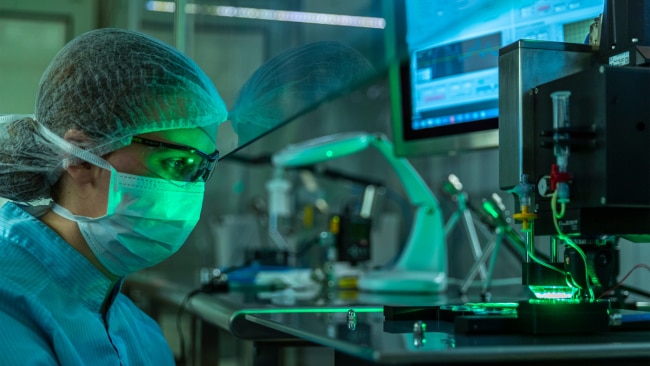Technology liberates a mind from physical bars
In his short life, Christopher Hills has seen the way advancing technology can project him into the world.

In his short life, Christopher Hills has seen the way advancing technology can project him into the world.
It never used to be that way.
The 19-year-old Sunshine Coast resident has cerebral palsy and quadriplegia, conditions that have restricted his movement and speech and, by extension, his means of engaging with the world.
He relied on clunky, expensive and often out-of-date devices to communicate with people and, he says, his development lagged behind his peers because even typing more than a few sentences required the help of a carer, often his father.
Now Mr Hills runs his own business, Switched-On Video Editing, and communicates with clients over social media and email.
“I access the world through two (Apple) Macs and an iPhone,” he said.
“They have a built-in accessibility feature, Switch Control, which gives me a customisable scanning interface so that I can select items on screen by tapping a switch on my headrest.
“Combined with the internet it has allowed me to engage with the world more than ever before and to participate and contribute in ways that I never really thought was possible.”
When the $22 billion national disability insurance scheme is up and running, participants will spend about $1bn a year on technologies that help them live with as little support as possible.
Mr Hills studied information technology at TAFE and video production online at RMIT University. His clients feed video on to the cloud, and he edits it using Final Cut Pro and returns it the same way.
“I fully hope to earn an income from my business as it grows,” he said.
“The NDIS will be a very big part of this because I hope that it will enable me to move from home and live more independently and pursue business opportunities that I know already are out there.”
Of more than 17,000 people given support plans in the NDIS so far, 2800 have received “capital” supports that include assistive technology.
This number will balloon when the NDIS reaches the 460,000 people for which it was designed, dragging a marketplace into existence and, with it, the development of technology.
There is likely to be a business case for investing in and creating accessible technology.
Mr Hills will speak at the three-day NDIS New World conference at the end of this month, drawing on his own experience to shape the way the sector responds to the coming change.
“From controlling lights and doors in my house, to starting a business, to helping a physicist in Canada experiment with a glove to make it easier for astronauts to use iPads when wearing bulky space-suits, all kinds of things are now possible for me,” he said.
It really is quite the resume.


